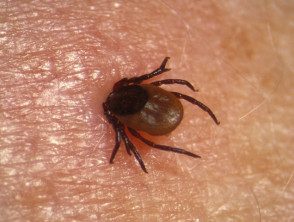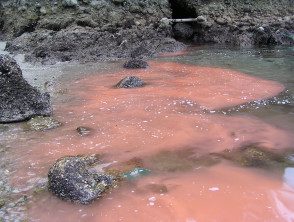What is climate change?
Climate change is a lasting alteration in weather patterns caused by factors such as ocean circulation, variations in solar radiation, plate tectonics, volcanic. rashesand human factors. These factors can affect global or local temperature, humidity, rainfall and extreme weather conditions.
The colloquial use of the term 'climate change' refers specifically to environmental changes caused by human factors, including global warming due to the production of gases that can trap heat in the atmosphere: carbon dioxide (CO2), methane (CH4 4), nitrous oxide (N2O) and fluorinated gases.
Climate change has been called a "risk multiplier" rather than a risk generator or risk factor, because it worsens pre-existing climate-related health concerns.
Climate influences a wide range of systemic diseases and conditions. Exposure to heat, a combination of air temperature, humidity, air movement, and heat radiation, can present an environmental hazard. The most common measurements used to describe heat stress are the Wet Bulb Globe Temperature (WBGT) and the Universal Thermal Climate Index (UTCI). A 29-degree WBGT has been shown to reduce work performance and cause a wide variety of respiratory, heart and gastrointestinal diseases.
Since the skin is exposed to the environment, it is especially vulnerable to increased heat and humidity. In this article, we describe the effects of a warmer environment on cutaneous infections and inflammatory skin diseases.
Who are the most vulnerable to the impact of a warmer environment?
People with a particularly high risk of hot conditions include:
- Infants and children
- Old people
- Pregnant women
- Outdoor workers and athletes
- Indoor workers in an environment without cooling.
- Tourists or those who are not familiar with the specific risks of local heat.
- People with chronic medical conditions (for example, renal illness and alcohol dependence)
- People with diseases that affect consciousness, mobility, and behavior (eg, Parkinson's disease, dementia, and developmental delay).
- Families and nations under financial stress and unable to adapt to environmental changes
- People who live in urban areas, because cities absorb, generate and retain more heat than rural areas
- People who live in homes not designed to reduce heat stress.
- The socially disadvantaged (that is, those who suffer from low Socioeconomic status, homelessness or social isolation).
Cutaneous infection associated with warmer weather
Warmer conditions lead to greater predominance of skin infections, including:
- Bacterial infections like impetigo, cellulite and boils
-
Skin conditions due to fungal infections such as pityriasis versicolor and tinea pedis
-
Viral skin conditions.
One study showed that for each 1 ° C increase in average temperature, the rate of foot and mouth disease increased by 10% and for each 1% increase in relative humidity (less than 65%) the rate increased by 6.6% .
Prevalent infections in a warm climate.

Blistering impetigo

Ringworm of the foot

Enterovirus infection
Vectortransmitted by disease
Mosquitoes, ticks, and fleas are vectors they carry pathogen virus, bacteriaand protozoa, which can be transferred from one host (for example, a mosquito) to another (for example, a person or an animal). Temperature plays an important role in vector propagation and vector-borne diseases. Warmer conditions lead to faster replication of certain viruses and vectors and higher transmission rates.
Tick-borne infection
Tick-borne infections include:
-
Lyme's desease (Borrelia burgdorferi)
- Stained fever rickettsia
- Anaplasmosis / Ehrlichiosis
- Babesiosis
- Tularemia
- Powassan virus
Mosquito-borne infection
Mosquito-borne infections include:
- Malaria
- West Nile virus
- Dengue
- Zika virus
- California serogroup virus
- Eastern equine encephalitis
- Saint Louis encephalitis.
Flea-borne infection
the incidence pest is likely to increase with warmer weather.
Arthropod bites

Tick bite

Mosquito bite

Flea bites
Waterborne illness
Heavy rains and floods are forecast to increase with climate change and this often leads to outbreaks of waterborne diseases. Water sources may experience increased pollution due to flooding or stagnate in drought. Floods also cause the disease to spread as people move en masse to search for dry land.
Climatic factors have been identified as important in outbreaks of the following waterborne diseases:
- Bacterial infections like infections with Escherichia coli, Campylobacter, Leptospira, typhoid fever and vibrio species
- Infections caused by parasites like toxoplasma and cryptosporidium.
- Viruses like hepatitis A and E, norovirus and polio
- Infection caused by helminth infestation like schistosomiasis.
Foodborne illness
Floods and droughts can lead to a lack of fresh water for washing and cooking, especially in resource poor nations. Warmer waters caused by rising temperatures can cause outbreaks of shellfish-borne diseases, such as Vibrio parahaemolyticus.
Mycotoxins
Increases in temperature and humidity cause the decomposition of food and, therefore, increase the consumption of mycotoxins, which are metabolites from molds Mycotoxins can also cause disease by penetrating the skin.
- About 4.5 billion people living in developing countries are chronically exposed to largely uncontrolled amounts of aflatoxin. Aspergillus fungal species (found in maize, peanuts, and decaying vegetation).
- Aflatoxin can cause liver disease, growth restriction in children and animals, Cancer, and immunosuppression that leads to vaccination failure and decreased resistance to infectious diseases.
- Other mycotoxins have been associated with skin irritation and skin rashes.
Phycotoxins
Phycotoxins are powerful naturals toxins produced by some marine algae and cyanobacterial species. Phycotoxin outbreaks or 'algal blooms' are often colloquially known as 'red tides' or 'green tides'. Shellfish intended for human consumption can be contaminated with phycotoxins in massive quantities.
- The adverse health effects associated with phycotoxins and the proliferation of harmful algae can occur orally, respiratory or dermal exposition.
- Human poisonings with phycotoxins are often misdiagnosed and therefore are not reported to public health authorities.
- Several phycotoxins are neurotoxic, life-threatening, and associated with chronic disease. morbidity.
- Some species of cyanobacteria produce phycotoxins that are dermatoxins; these include;
- Aplysiatoxins, which cause respiratory symptoms and skin irritation.
- Lyngbyatoxin, which causes smooth muscle contraction and skin irritation.
Algae outbreak

red tide

Green tide
Thermal injury
The warmer climate created by climate change is likely to lead to hot surfaces and an increased number of forest and building fires. This is likely to cause an increase in thermal burns.
Exposure to Ultraviolet radiation
The measured levels of ultraviolet radiation are largely independent of heat and humidity. However, higher outdoor temperatures in previously temperate climates can cause people to wear fewer clothes and spend longer periods outdoors, thereby increasing skin exposure. UV radiation.
Probable UV damage could include:
- Sun tanning
- Skin aging
-
Skin cancer.
Effects of ultraviolet radiation on the skin.

Sun tanning

Actinic keratosis

Amelanotic nodular melanoma
Inflammatory skin diseases.
-
Contact dermatitis it is more common and more severe when the ambient temperature is higher.
-
Asteatotic eczema it is less common in heat, damp climates compared to dry and cold climates.
- The prevalence of atopic dermatitis can be affected by changes in aeroallergens like dust Pinch, Dermatophagoides pteronyssinus.
- Higher temperatures cause more intertrigo, especially when associated with obesity and diabetes.
- Hyperhidrosis leads to miliary and transitory acantholytic skin disease (Grover's disease).
- A warm environment can also cause outbreaks of rosacea, cholinergic urticariaand hives heat.
Inflammatory skin diseases aggravated by heat conditions.

Contact dermatitis causing intertrigo

Miliaria

Cholinergic urticaria
Barriers to long-term projections on the interaction of climatic factors and diseases
Better early warning systems and prediction tools would allow better prevention and management of any disease. epidemics it is likely associated with a changing climate, including those affecting the skin.
Current barriers to long-term accuracy epidemiological Assessments and projections related to climate change include:
- Disease shortage data
- Changes in health systems, socioeconomic status and land use at the international level.
- The long time involved is difficult to assess changes in climate without consistent quality data over decades and centuries of weather events
- Diagnostic inaccuracy and change of case definitions
- International poverty is likely that the countries that support the poorest and most vulnerable populations are the most affected by climate change.
